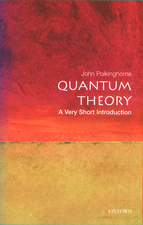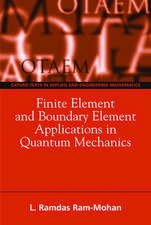Dissipative Structures and Chaos
Autor Hazime Mori Traducere de G. C. Paquette Autor Yoshiki Kuramotoen Limba Engleză Paperback – 24 noi 2011
Preț: 389.49 lei
Nou
Puncte Express: 584
Preț estimativ în valută:
74.53€ • 78.17$ • 62.04£
74.53€ • 78.17$ • 62.04£
Carte tipărită la comandă
Livrare economică 01-15 aprilie
Preluare comenzi: 021 569.72.76
Specificații
ISBN-13: 9783642803789
ISBN-10: 3642803784
Pagini: 320
Ilustrații: XIX, 299 p.
Dimensiuni: 155 x 235 x 17 mm
Greutate: 0.45 kg
Ediția:Softcover reprint of the original 1st ed. 1998
Editura: Springer Berlin, Heidelberg
Colecția Springer
Locul publicării:Berlin, Heidelberg, Germany
ISBN-10: 3642803784
Pagini: 320
Ilustrații: XIX, 299 p.
Dimensiuni: 155 x 235 x 17 mm
Greutate: 0.45 kg
Ediția:Softcover reprint of the original 1st ed. 1998
Editura: Springer Berlin, Heidelberg
Colecția Springer
Locul publicării:Berlin, Heidelberg, Germany
Public țintă
GraduateCuprins
I. Dissipative Structures.- 1. A Representative Example of Dissipative Structure.- 2. Amplitude Equations and Their Applications.- 3. Reaction-Diffusion Systems and Interface Dynamics.- 4. Phase Dynamics.- 5. Foundations of Reduction Theory.- Supplement I: Dynamics of Coupled Oscillator Systems.- II. The Structure and Physics of Chaos.- 6. A Physical Approach to Chaos.- 7. Bifurcation Phenomena of Dissipative Dynamical Systems.- 8. The Statistical Physics of Aperiodic Motion.- 9 Chaotic Bifurcations and Critical Phenomena.- 10. Mixing and Diffusion in Chaos of Conservative Systems.- Supplement II: On the Structure of Chaos.- A. Appendix.- A.1 Periodic Points of Conservative Maps and Their Neighborhoods.- A.2 Variance and the Time Correlation Function.- A.3 The Cantor Repellor of Intermittent Chaos.
Recenzii
"...extremely well written ...and has sufficient detail and clarity to enable readers (presumably post-graduates) to learn the important techniques presented... the best reference that I know that describes the physics (and in particular the statistical physics) of dissipative structures and chaos...an absolute must" Australian & New Zealand Physicist
Textul de pe ultima copertă
This monograph consists of two parts and gives an approach to the physics of open nonequilibrium systems. Part I derives the phenomena of dissipative structures on the basis of reduced evolution equations and includes Bénard convection and Belousov-Zhabotinskii chemical reactions. Part II discusses the physics and structures of chaos. While presenting a construction of the statistical physics of chaos, the authors unify the geometrical and statistical descriptions of dynamical systems. The shape of chaotic attractors is characterized, as are the mixing and diffusion of chaotic orbits and the fluctuation of energy dissipation exhibited by chaotic systems.
Caracteristici
Introduction to the field Research topics included Interdisciplinary approach Written by highly reputated Japanese scientists









